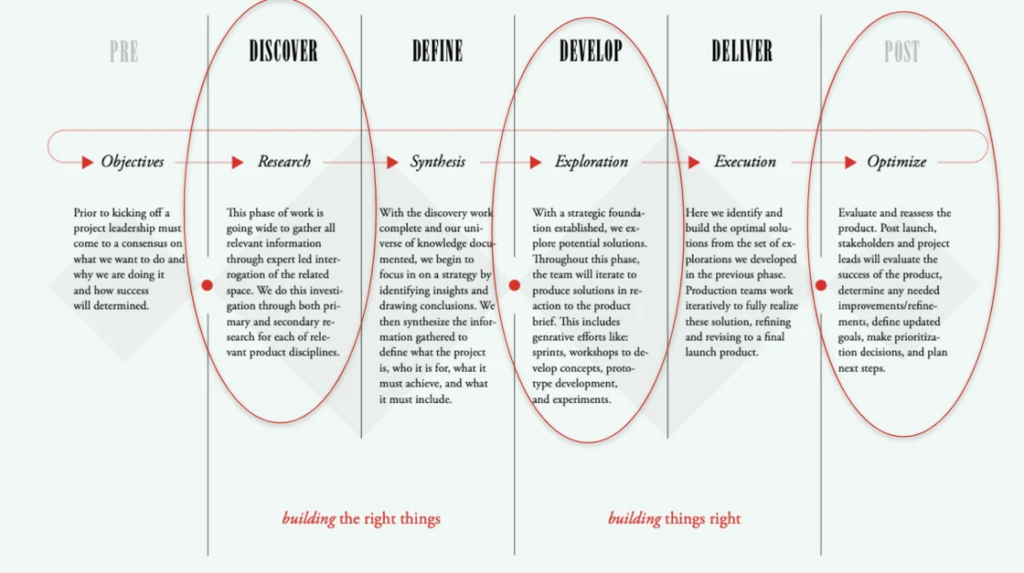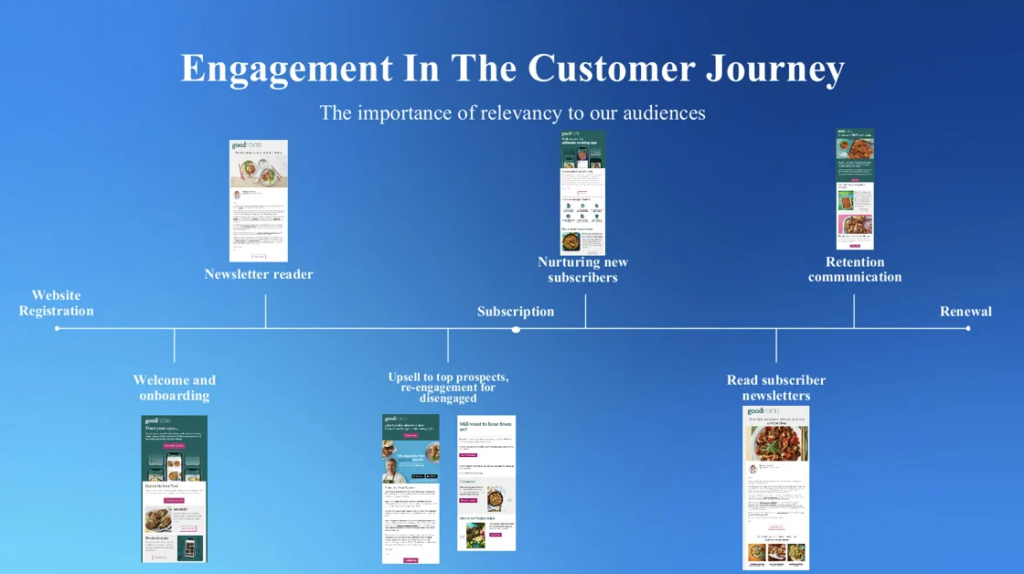

You're reading The Audiencers' newsletter #43 sent out on July 24th, 2024. To receive future newsletters straight to your inbox every two weeks, sign up here.
In today’s newsletter:
The state of the mobile publishing report 2024 is out, Kevin Anderson shares his key takeaways
Audience research at The Atlantic: takeaways from The Audiencers’ Festival New York
Elections, Euros, Olympics: engaging and converting audiences during big events
Immediate Media’s newsletter strategy for driving conversion & retention
From the archives: what are the most valuable engagement metrics to measure in a subscription model?
Audience research at The Atlantic
Providing the space to connect directly with subscribers, audience research allows The Atlantic team to bring their reader’s voice in the room when making decisions about product.
Gina Bulla, Executive Director Audience Research, and Mariah Craddick, Executive Director Product, spoke at The Audiencers’ Festival New York on the topic:
For Gina, audience research falls into 4 buckets:
- Listen – keeping an eye on social media comments, care team feedback, reviews… you can learn a lot without ever asking a question
- Connect – directly connecting with audience via zoom to get feedback
- Educate – sharing learnings with the entire organization
- Advocate with balance – advocating for the audience whilst also bearing in mind that a lot of things go into a business decision
How does The Atlantic integrate audience research into product development?
There are 4 primary stages to the product development lifecycle with audience research being brought in to ensure they’re building the right things, and building things right.

Case study: bringing more value to readers and subscribers through the mobile app
In this session, Mariah and Gina shared how they use the audience research guiding principles to build successful products with the example of their mobile app optimization, making use of it to better engage and retain subscribers.
> Find the full session write up from the Festival here
Elections, Euros, Olympics: engaging and converting audiences during big events
2024 is a big year for the industry, and not one to let slide when it comes to engaging and converting your audiences.
Whilst some of these events have been and gone, there will be plenty more in the future. So we looked at how publishers around the world have been maximizing on the potential value of these events to develop their online audiences, from live blogs and countdown clocks to special subscription offers and dedicated newsletters.
> An article you should definitely check out for some engagement inspiration
Immediate Media’s newsletter strategy for driving conversion & retention
Matt Nash, Head of CRM and Retention at Immediate, spoke on their newsletter strategy for driving conversion and engagement at Media Voices’ recent Newsletter Summit. Here are my key takeaways:
> The importance of relevancy and timing: personalizing the user experience is essential

For example, they segment by recency of engagement, with high engagers receiving upsell to subscription emails (generating 10% of all subs acquisitions) and additional newsletters (average of 5-6x higher CTR), whilst the focus with low engagers is on re-engagement
They’re also testing personalized send times, increasing CTR by 2-5%pts
> Use the onboarding phase to showcase what you have to offer, introducing some of your most valuable engagement features but reserving others for later in the subscriber’s lifetime, ensuring you don’t bombard the user
For Immediate, open and click-through rates are 30% and 47% higher for onboarding emails, making it the ideal opportunity to increase engagement
> Create moments of surprise and delight to continuously show value, for example with competitions and giveaways
> But don’t forget to test & learn along the way! Listening to customer feedback has also been important, helping the team to spot issues, know what’s working and collect success stories

I
From the archives: what are the most valuable engagement metrics to measure in a subscription model?
How to measure engagement, an evergreen question!… Whilst there’s no shortage of engagement data available, many are struggling to prioritize metrics, understanding which are actually valuable to track with the end goal being to increase reader revenue. So we got to work, asking experts around the industry of their take.
One interesting perspective came from publishers in DRIVE, the digital reader revenue initiative, who measure the success of their stories with 3 key metrics:
- Media time -> How big is the total reach?
- Number of Champions -> How many users use the news websites and apps intensively?
- Subscription Rate Champions -> How many of these intensive users could be converted into a subscription?
“The most important metric is Media Time – how much time does a user give us on a website or app? Media Time is easy to understand for editors and analysts. And data analyses show that Media Time can predict conversion and churn very well. The conversion probability increases by 130 times if the media time increases by 10 minutes per week. The churn probability is halved if the media time increases by 10 minutes per week.” – Katja Fleischmann, product manager at dpa infocom, and Dr. Ole Martin, data scientist at Schickler consultancy.

It was my conversation with Steve Price, digital publishing consultant who has previously held senior roles at Dennis Publishing, Hearst, iSubscribe and the Telegraph, that really dove into the heart of the metrics to track in a reader revenue model.
The key: instead of starting with engagement, turn to look at your most loyal subscribers to discover what engagement actions are linked to highly valuable users.
“Think of subscription as a bucket with holes. Users flow through but engagement fills the holes, keeping people in the bucket. Engagement is therefore a tool to persuade someone to convert and stay, rather than the goal in itself.”
> Find the full article, including interviews with various industry experts, here
State of the mobile publishing report 2024
Pugpig’s annual report is out, looking at the mobile publishing industry. Kevin Anderson, Director of Consulting Services, shares his key takeaways on The Audiencers.
TL;DR
> Mobile is the dominant platform for audiences, and news and magazines has been a fast-growing segment amongst non-gaming apps, in terms of both downloads and revenue
> There has been an explosion in demand for AI chat and image generation apps, and the technology has a halo effect, as apps with AI features benefit from the surge in interest in artificial intelligence
> First-party data is a priority for publishers, and many use their apps to collect their own data
> Push notifications are a killer feature for apps, offering a unique path to direct engagement
> Audio, puzzles and digital editions deliver high levels of engagement, and publishers should lean into these formats to build loyalty and habit with audiences
> Publishers plan to develop apps with richer, more personalized content and deeper community and interactive features. Publishers are already launching apps with high-touch membership features to increase revenue
Content to add to your reading list:
- Toronto Star launches pay-per-article and daily passes for website access
- Innovation in Media 2024-25 World Report
- Dynamic paywall testing: how FAZ is working to reach 300,000 digital subscribers by 2025
The Audiencers’ newsletter: from professionals to professionals
Sign up to our newsletter – real-life examples, expert points of view and inspirations from publishers around the world to help you do your job better. Sent every two weeks.


